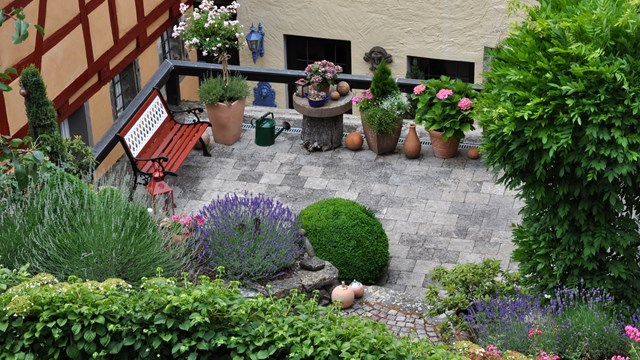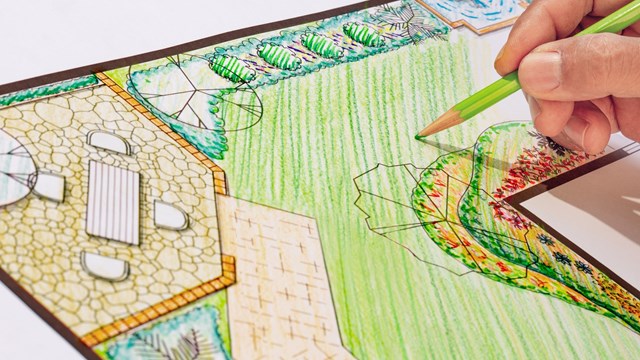
The sudden emergence of Kermit the Frog as a box office draw is not an accident—it seems that everywhere, everybody is 'going green.' The term is shorthand for a movement of environmental awareness, and it involves everything from the way architects design new construction to the way HOAs recycle their waste.
Chicago, of course, has long been in the forefront of this movement, which began as a quixotic attempt by activists to arrest global warming and help preserve the environment. And it is one of the leading cities in encouraging green roofs and, in fact, it is number one in the country in Leadership in Energy & Environmental Design (LEED) buildings and space, according to a recent U.S. Green Building Council survey. Chicago’s green roof initiative started way back with former Mayor Richard Daley and today the Windy City boasts more green roofs than any other municipality in the country.
But it’s now driven by a different kind of green—money. Going green doesn’t just appease the environmentally conscious; it impacts an HOA’s bottom line. Solar panels drastically reduce the cost of electricity. Better windows further reduce the amount of electricity needed. And then there’s real estate values.
“I think the recent attention has sprung out of lifecycle costs, mainly. It was clear to people that there was no telling how expensive fossil fuels could get, and there was some momentum from our clients to address that,” says Matt Nardella, an architect with MOSS. “Some architects and firms were a little more well-equipped to handle this, just because we had been doing it already, not just to save money in the long run, but also knowing that we have a finite amount of resources on the planet and we can’t use them infinitely.”
Going Green…
In Chicago, none of this is news. The municipal government has a long track record of leadership in this area, and architects like Nardella and savvy HOAs both are as well versed in the virtues of going green than anyone else in the country. But “green” has changed in the last few years.
“Architects have been ready and anxious to implement green design features to the biggest extent possible,” says Rada Doytcheva, AIA, LEED BD+C, a principal and the head of design at Chicago-based RADA Architects, pretty much summing up The Windy City’s stance in general. “The pressure to design to LEED”—Leadership in Environment and Energy Design—“standards has been tremendous.”
It isn’t all about LEED, however.
“We’re looking at the materials in a little more detail, and doing more research into where the materials come from,” says James Collins, an architect and the president of Criterium-Collins Architects & Engineers in Oak Park. “In the past, we would just pick something, like drywall or wood, and really not think much about it. Today we’re more aware of our environment and participating in making things more economical to put in.”
This goes hand-in-hand with an ethos of not wasting anything that was once the norm. “I think in a way, it almost goes back to how people used to think hundreds of years ago, when people didn’t waste things, and recycled, and bought things locally. In a way, we’re reverting to what our ancestors used to do all the time, but which we’ve gotten away from,” he says.
Rare is the new residential building development that does not factor environmental concerns into its design. This includes everything from building materials and solar power to the direction the front door faces.
“Designing eco-friendly buildings is definitely not entirely visible on the outside,” says Doytcheva. “A green project should be an energy-efficient project, and this starts with site selection, proper orientation of the building relative to sun and winds, and the extent of exterior glazing and treatment in relation to the latter.”
At first blush, this may sound arbitrary, or else influenced a bit too heavily by feng shui. But there are very practical reasons for making the right choices with building orientation. “For instance east/west building orientation (i.e. windows facing these directions) will certainly create more heat gain and glare, as well as higher cooling loads—with the sun being fairly low for the better part of the day.”
Nardella agrees. “The biggest thing is understanding that a lot of the design elements are just planning intelligently,” he says. “You can design sustainably for free. There are several things you can do, not only with building orientation, but how you address where window openings are, where overhangs are, and layout of your space, that have a big impact on how energy is consumed. And since you have to put in windows and roofs and things like this anyway, you might as well orient them correctly, to take advantage of the natural conditions, like prevailing winds, sun direction, or shading. These are things that really have no upfront costs. They’re just ways to design well, but they have to be thought about in advance. Once you build it, it’s too late.”
If You Build It…
Most residential buildings, of course, have already been built. They cannot change their east/west orientation, but there’s still plenty that can be done to retrofit an existing building.
“One place to start is the roof,” Collins advises. “You can do a lot more insulation, because the greatest percentage of heat is often lost through the roof. When you re-roof, adding another six or eight inches of insulation will really cut down the heat loss. It’s a very economical way of doing things.”
Some steps a building can take are even simpler. Windows, for example. “Not a lot of attention was always given to natural light and ventilation,” says Nardella. “When all the high-rises were built in the ‘50s,’60s, ‘70s, they were all air-conditioned boxes, with no windows that opened. People got sick, and there was a high absentee rate in buildings like that. So something as simple as being able to open a window is a big step in the right direction. If we can’t change anything else, at least we can change the type of window that’s there.”
And the windows of today are leaps and bounds better that what was previously available. “Glass is definitely on top of the list of components that should be selected carefully, as yes, glass impacts energy significantly,” says Doytcheva. “The good news is that the R&D in this sphere, the healthy competitive environment in this industry, has brought to the mass market very good windows with excellent thermal resistance values and new features such as Low E coating and inert gases within the thermal pane.”
Another place to make a big impact: insulation. “Insulation can be done fairly readily too,” Nardella says. “A lot of the old buildings around here have no insulation.”
To take advantage of all of this, buildings must be the change agents. “The desire has to be there on the client’s end,” says Nardella. “It’s something we care about, and that’s how we can be selective with who we work with. There has to be the will there, because if we’re fighting the battle the whole way, then it’s easy for sustainable elements to be cut, because they’re viewed as wasteful upfront spending. And that’s how it was ten or fifteen years ago, when we had to do the educating. Now it seems like most people in the mainstream at least know it’s an issue.”
One thing seems certain: Chicago will continue to be on the vanguard of the green architecture movement.
“The city of Chicago, in terms of an energy code for buildings, is about ready to adopt the IECC 2012”—the International Energy Conservation Code, says William Hicks, an architect with the Hicks Architectural Group in Chicago. “It sets a very, very high bar for energy conservation.”
This would create a new chapter in the relationship between Chicago buildings and green architecture. “We are over the story of how we’re going to help buildings with better lighting, because all these standards are now in place,” Hicks says. “But the big standard that’s hitting the market right now is the façade of the building: the air infiltration requirements, and the insulation requirements. Things like programmable thermostats and low voltage lighting are all embedded now as good thinking, so the focus of the market right now has shifted to skins: the wall systems of the buildings. That’s really what it’s about. And with the new codes, how we build in Chicago is going to change.”
Next Steps
Three and a half decades after President Carter famously installed solar panels at the White House, the noble idea of going green has started to make good financial sense.
In short, green is this year’s color—and will be the color for the foreseeable future. As more money is invested in green technologies, and more HOAs realize the money saved by it, the Greater Chicagoland region will soon be even greener than it already is.
Greg Olear is a freelance writer and a frequent contributor to The Chicagoland Cooperator.





Leave a Comment